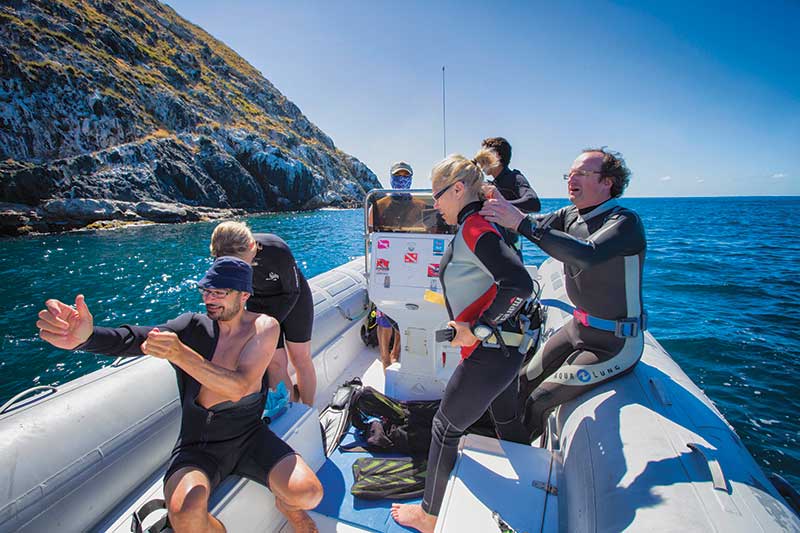Fostering Safety Culture
By Divers Alert Network

While bubble-related injuries get a lot of attention, they represent only a fraction of the trouble divers can face. Similarly, important safety concerns include slips and falls as well as injuries resulting from poor technique or insufficiently maintained equipment. The impact of any given safety concern can ripple widely throughout the community, potentially affecting dive operators, dive pros, and divers in physical, emotional, and financial ways.
A well-rounded approach to dive safety will help reduce incidents—this is the premise of a culture safety. When a culture of safety is widely adopted by an organization or a community, it drives incident rates down and promotes safety for all—and it keeps diving fun.
What is a culture of safety?
Diving generally involves reliance on others for safety. When you stroll into a dive shop ready for an adventure, you expect that the air provided meets safety standards, that your rental equipment is cleaned and in good shape, and that the boat operator will be there when you surface. We all know that on rare occasions these expectations are not met, and this is why establishing a culture of safety is so important.
Encompassing the values, attitudes, and patterns of behaviour of individuals and groups, a culture of safety is a commitment to standards established by trusted experts. In practice it looks like divers getting proper certifications, dive operators utilizing proper signage, employees receiving education, and dive boat operators maintaining clean and hazard-free vessels. It is everyone’s job to put safety first and advance the culture.
But why is all this important? Embracing safety helps keep incident rates low. Safety practices are not always followed (we all make mistakes), but accident rates would be far higher if the cultural norms in diving were less focused on safety. There is always room for improvement, and ongoing education can help further and advance these values.
Role models
Outside influences play a huge role on people’s decisions and how they approach personal safety. Dive instructors or dive buddies can be great role models as they practice proper procedures. Within an organization, people look up to leaders and follow their examples. It is up to everyone within an organization to exemplify model behaviours; and perpetuating safe behaviours is everyone’s responsibility.
But sometimes, peer pressure can influence decision making negatively, leading to an unsafe or hostile environment for a diver. When pressure comes from a dive buddy, it can be especially hard to resist. A culture of safety can only thrive if social pressure is used as a positive force to instill these values.
It takes every individual to work for and demonstrate the importance of a safety-oriented culture. When no one is watching, how do you behave? Do you cut corners or stick to the proper protocols? Regardless of whether you’re with your buddy only or part of a larger group, constantly practice and demonstrate the behaviours that are associated with reduced incidents.
To help reinforce this culture, never be afraid to voice any concerns, questions, or opinions. If you see an unsafe practice or feel like your safety is at risk, say something to your dive buddy, the dive operator, or to your membership organization. We can find personal empowerment in these situations, and it’s important to surround ourselves with fellow individuals who prioritize safety.
Safety dance
Unfortunately, some people just aren’t up to speed on current safety standards or standard practices. “We’ve done it this way for years!” is a common refrain that indicates the way something is done isn’t necessarily the safest and most effective way. Openness to new protocols and a willingness to fully embrace a culture of safety will help not only keep dive incidents low, but also ensure diving is enjoyable for everyone.
For more safety information on safe diving practices visit: www.dan.org
Leave a Comment







